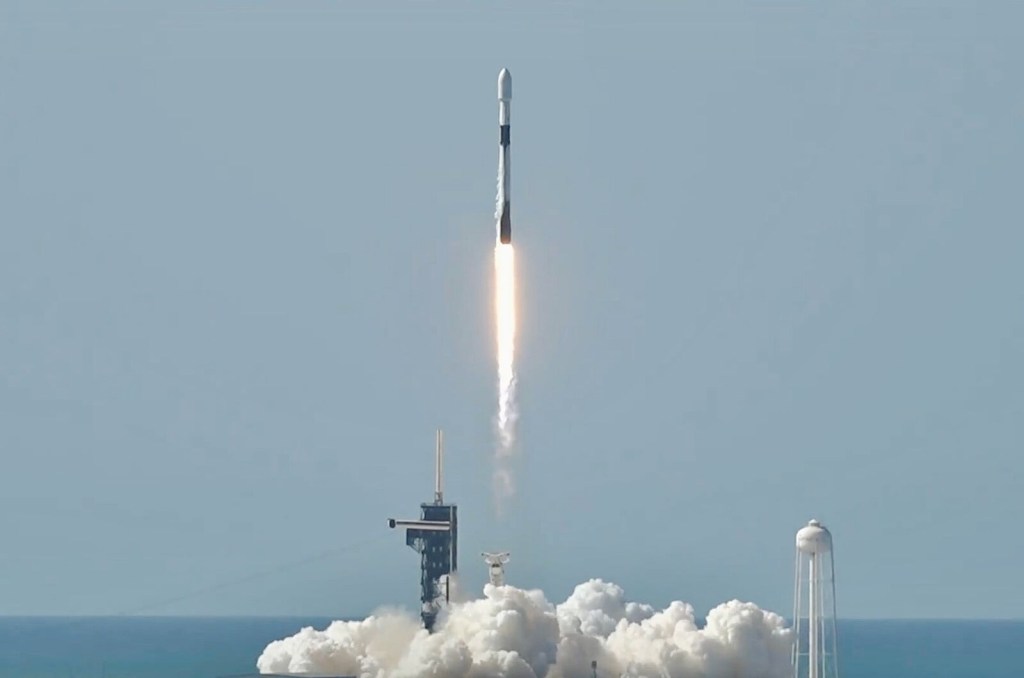WASHINGTON — In a significant milestone for space technology and environmental science, a Falcon 9 rocket successfully launched a European satellite on July 1. The satellite, designed for a dual mission, will collect crucial weather data and monitor atmospheric pollution, enhancing our understanding of climate change and air quality.
The launch took place at Cape Canaveral Space Force Station in Florida, marking another successful mission for SpaceX’s Falcon 9, known for its reliability and reusability. The satellite, developed by the European Space Agency (ESA), aims to provide comprehensive data to improve weather forecasting and track pollution levels across the globe.
Enhancing Weather Forecasting and Pollution Tracking
This new satellite is equipped with cutting-edge instruments capable of measuring a wide range of atmospheric parameters. By collecting data on temperature, humidity, and wind patterns, it will significantly enhance the accuracy of weather forecasts. Additionally, its ability to monitor air pollutants will provide invaluable insights into the sources and spread of pollution.
According to ESA officials, the satellite will orbit the Earth at an altitude of approximately 800 kilometers, ensuring comprehensive coverage of the planet’s atmosphere. This mission is part of a broader initiative by the ESA to leverage space technology in addressing environmental challenges.
A Collaborative Effort with Far-Reaching Impact
The launch represents a collaborative effort between multiple European countries, each contributing expertise and resources. The satellite’s development involved leading aerospace companies and research institutions, highlighting the importance of international cooperation in tackling global issues.
Experts believe that the data collected by this satellite will be instrumental in shaping environmental policies and strategies. Dr. Maria Hernandez, a climate scientist at the University of Madrid, emphasized the potential impact, stating,
“The ability to monitor atmospheric pollution in real-time will revolutionize our approach to combating climate change and protecting public health.”
Historical Context and Future Prospects
This development follows a long history of using satellites for environmental monitoring. Since the launch of the first weather satellite, TIROS-1, in 1960, space-based observation has become a cornerstone of meteorology and environmental science. The new satellite continues this legacy, offering more advanced capabilities than ever before.
Looking ahead, the data gathered by this mission is expected to contribute to the Intergovernmental Panel on Climate Change (IPCC) reports, which guide global climate policy. The satellite’s findings will also support initiatives aimed at reducing pollution and improving air quality standards worldwide.
Implications for Future Space Missions
Meanwhile, the successful launch of this satellite underscores the growing role of private companies like SpaceX in space exploration and technology. The Falcon 9’s reusability not only reduces costs but also opens up new possibilities for frequent and sustainable space missions.
As the demand for environmental data continues to rise, future missions are likely to focus on enhancing the precision and scope of satellite observations. The integration of artificial intelligence and machine learning in data analysis is expected to further advance our understanding of complex atmospheric processes.
In conclusion, the launch of the European weather and pollution monitoring satellite marks a significant step forward in our ability to address environmental challenges from space. As this mission progresses, the insights gained will be crucial in shaping a sustainable future for our planet.
